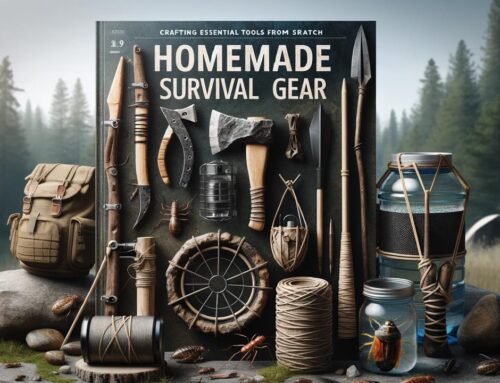Knot basics and lingo – Knot Tying Ultimate Guide Beginner Series
Knot tying basics, an essential skill across various activities, holds immense practical value. From sailing to camping, understanding knot basics and terminology is crucial for efficient and safe applications.
Key Takeaways
- Mastering basic knots is invaluable for outdoor activities, sailing, and everyday tasks.
- Knowing knot terminology enhances one’s ability to learn and apply knot-tying techniques effectively.
Table of Contents
- Understanding Basic Knots
- Knot Terminology and Lingo
- Knot Usage in Survival Situations
- Frequently Asked Questions
- Additional Resources
Understanding Basic Knots
I. The Fundamental Knots: Their Importance and Applications
Basic knots are the cornerstone of knot tying. The Square Knot and Sheet Bend, for instance, are fundamental in joining ropes and form the basis for more intricate knots.
II. Step-by-Step Guide to Tying Basic Knots
- Square Knot: A versatile knot for joining two rope ends. Begin by holding a rope end in each hand, cross the right end over and under the left, then reverse the process. This knot is remembered as “Right over left and tuck under, left over right and tuck under”.
- Surgeon Knot: Similar to the Square Knot but with an extra twist for added tension, useful when tying under load.
- Figure Eight Knot: A stopper knot to prevent rope slippage, ideal for climbers and sailors.
- Bowline: Creates a secure loop, easily untied after heavy loads, ideal for climbing.
- Clove Hitch: Effective for securing to poles, commonly used in lashings.
III. Common Uses of Basic Knots
These knots have diverse applications such as tying tarps, hanging hammocks, and securing loads in sailing and climbing scenarios.
Knot Terminology and Lingo
IV. Essential Knot Terminology: Definitions and Examples
Understanding the language of knots is as crucial as tying them. Here’s a breakdown of key terms:
- Working End: The active part of the rope used in knot tying.
- Bight and Crossing Point: A bight is a slack part in the middle of a rope, usually a loop. Crossing points occur where the rope crosses itself.
- Standing Part and Standing End: These refer to the inactive part of the rope and its opposite end.
- Additional Terms: Terms like Bend, Binding knots, and Chirality each have specific meanings in the world of knots…
V. Understanding Knot Lingo for Practical Application
Knowing these terms enhances one’s ability to follow knot-tying instructions and communicate effectively about knots.
Here’s an explanation of Knot basics and lingo from the YouTube channel The Prepared
Knot Usage in Survival Situations
VI. Knots as Survival Tools
In survival situations, knowing the right knots can make a significant difference. Whether it’s for building shelters, securing gear, or even first aid, effective knot-tying skills are invaluable.
- Shelter Building: Use knots like the Square Knot and Taut-Line Hitch for constructing and securing shelters.
- Gear Securing: The Clove Hitch is ideal for attaching items to your backpack or to secure gear.
- First Aid Applications: In emergencies, knots can be used to secure bandages or splints.
Knot-tying skills are not just about survival; they empower you to adapt and overcome challenges in the wilderness.







Leave A Comment